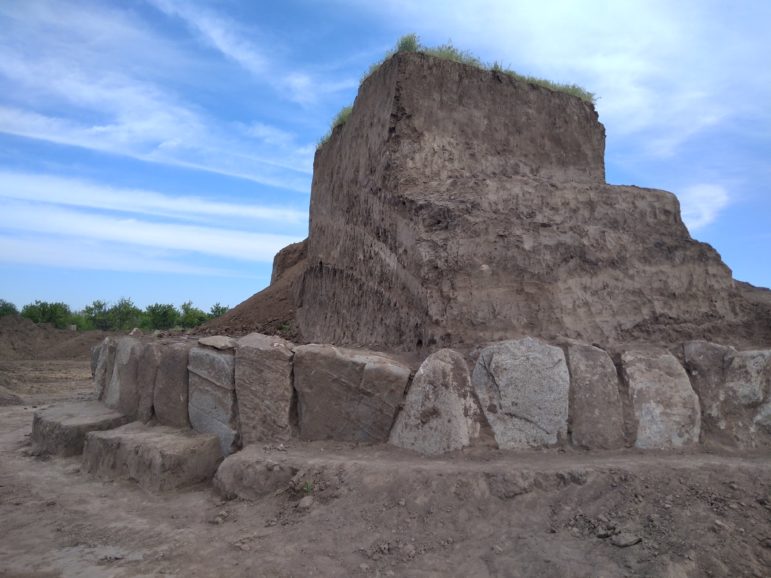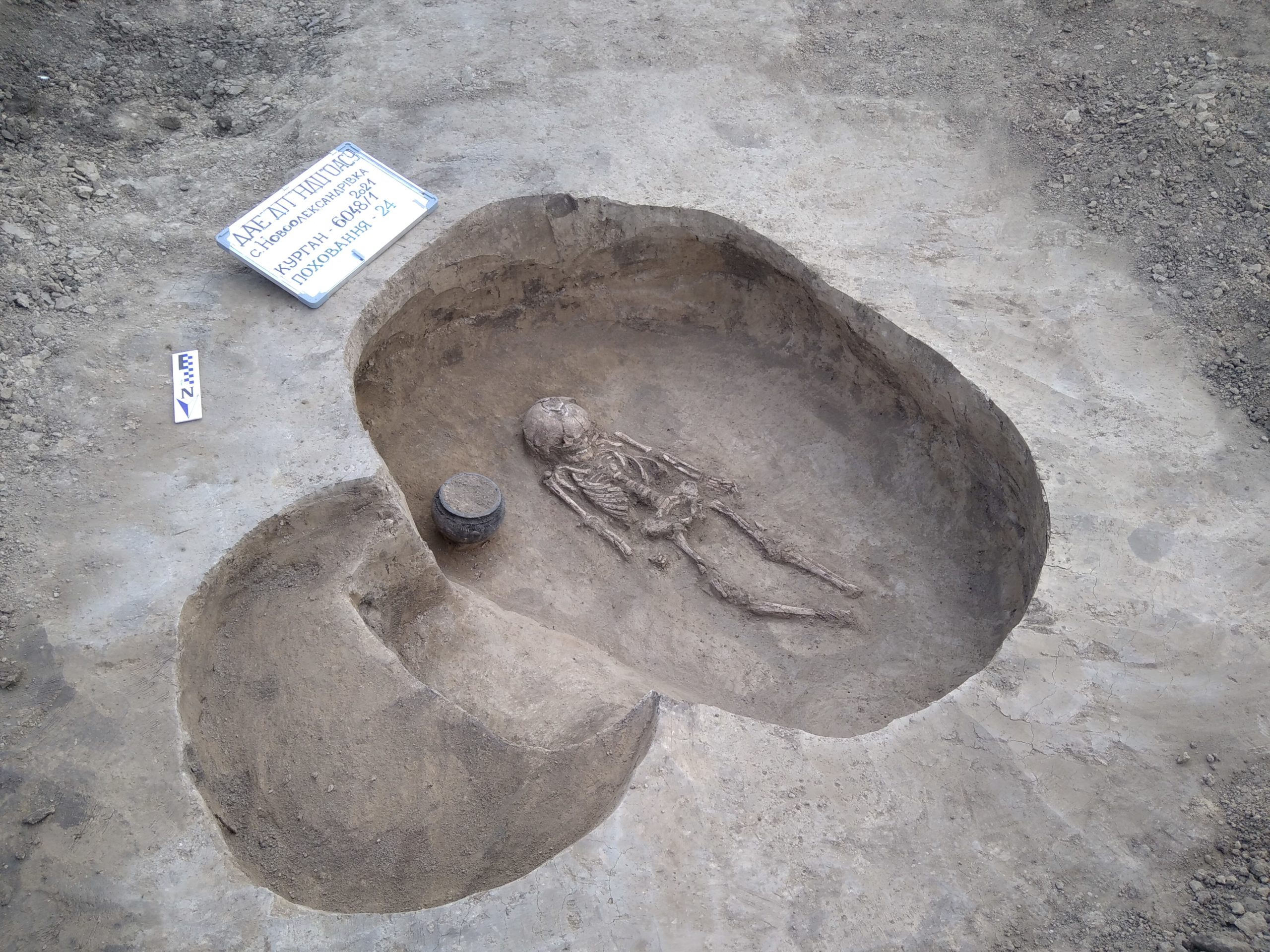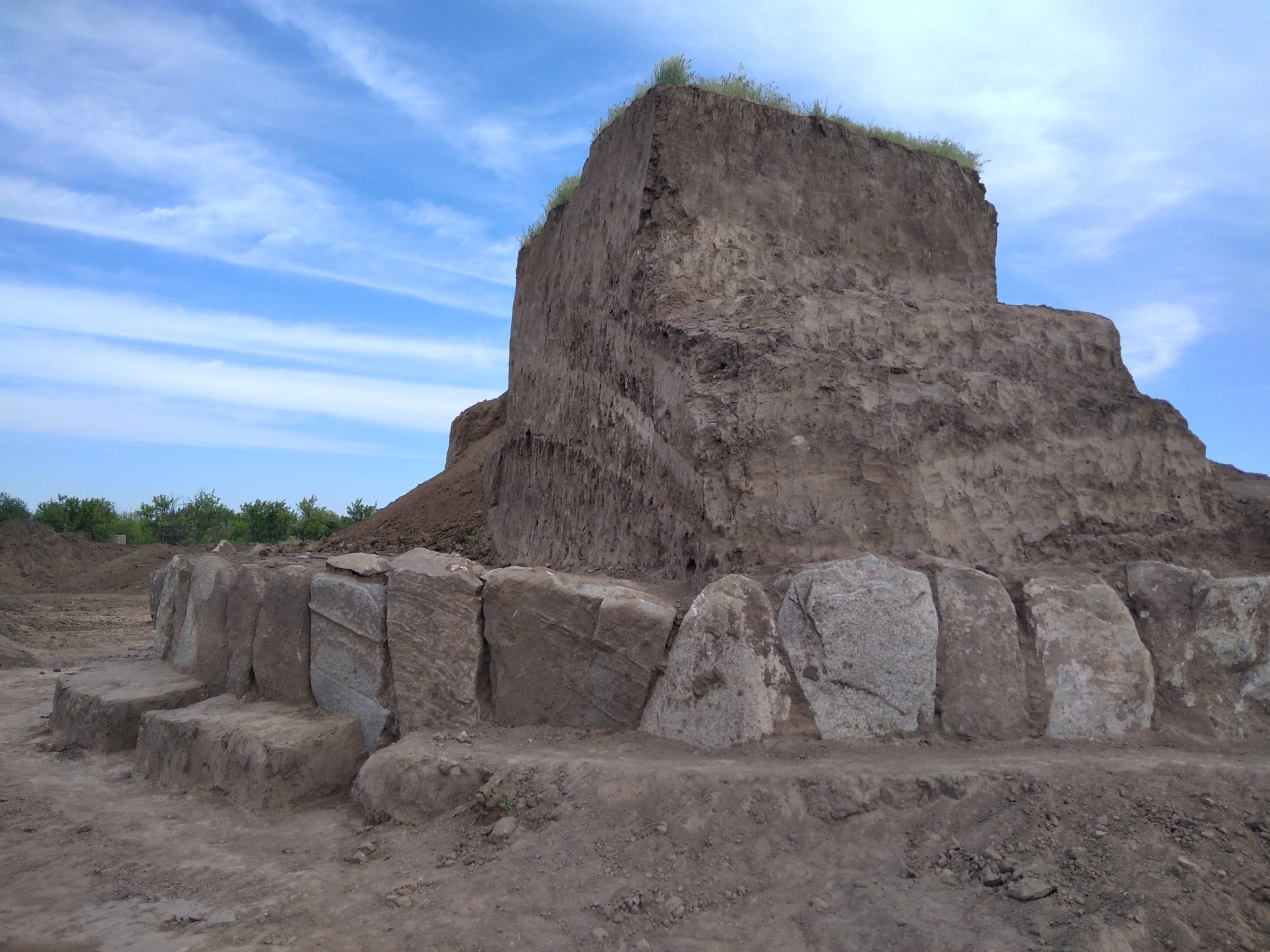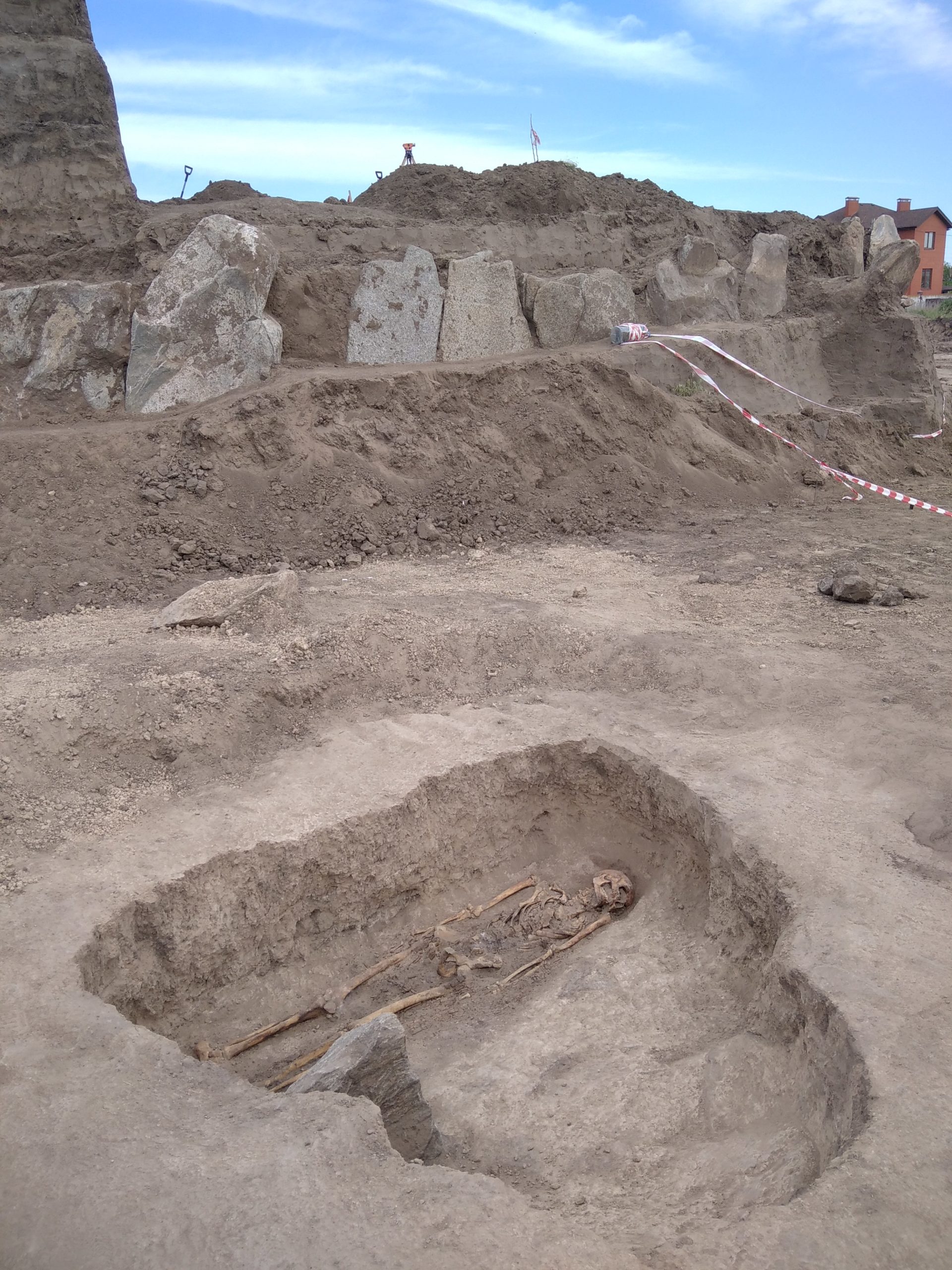TWH – Recently, The Archaeology News Network reported on a newly excavated kurgan located near the village of Novooleksandrivka in eastern Ukraine. A kurgan is a burial mound found on the Eurasian steppe and frequently will contain multiple burials from different times. Archaeologists consider a burial mound to be an embankment over a burial.

Closely fitting standing stones or “cromlech” revealed with the kurgan during excavation at Novoolexandrivsky – Image credit: Роман Днепр – CC BY-SA 4.0]
The Ukrainian kurgan contained 24 burials ranging from the Bronze Age to the Middle Ages. If people were buried in kurgans, then it is likely there were some type of burial rituals. By examining the physical remains, archaeologists can infer how burial rituals might have occurred.
According to an article in The Journal of Archaeological Science, the peoples of the Eurasian steppe began to build kurgans around 4000 B.C.E. They continued to bury their dead in kurgans into the early and high Middle Ages up to around 1450 C.E.
Over this roughly 5400 year period, cultures, peoples, and funeral rites likely changed over time. Despite these changes, the peoples of the Eurasian steppes kept burying their dead in kurgans.
The newly excavated Ukrainian kurgan
The newly excavated Ukrainian kurgan has a length of 120 m (about 394 ft.) and a width of 80 m (about 262 ft.). It rises 7 m (about 21 ft.) above the ground. In the center of this kurgan, excavators found a circle of standing stones, with a diameter of 18 m (about 59 ft.). The stones are several meters in height with almost no space between the stones.
Archaeologists call this circle of standing stones a “cromlech,” which translates in a variety of languages as exclusively denoting a megalithic stone circle. Above the cromlech, a truncated cone supported the structural integrity of the kurgan.
The mourners placed their dead in the burial chamber. It contained few grave goods. The goods that archaeologists found included pots and necklaces of teeth from dogs and wolves.
In one burial chamber, they found the following: 1) a battle-ax, 2) materials for horse bridles, 3) bone and bronze arrows, and 4) a gold-plated Scythian short sword.
Archaeologists found also ceramics in the burial chamber that dated to about 3500 B.C.E.
One burial consisted of three bodies: a male, female, and child. Another burial consisted of a 30-year-old male and a 10-year-old child. Another burial contained the remains of a male aged 18 to 20 years. His grave goods suggested he was a warrior and a master rider.
The cromlech could also contain human remains. Archaeologist, Dmitry Teslenko, of the Ukrainian Archaeological Guard Service, believes a high-status individual lies buried in the cromlech. He expects to have the cromlech completely excavated in a few weeks. Once that happens, Teslenko can send samples for analysis. He plans to restore the cromlech area and create a museum.
Burial rites of the Sarmatian culture
Archaeologists have excavated other kurgans more thoroughly. Based on what they found in these kurgans, they have theorized what an actual burial ritual could be.
The Journal of Archaeological Science reported on a theorized burial rite of the Sarmatian culture. Archaeologists based this theorized burial rite on kurgan N45. It rises from the steppe near the city of Volgograd. That city used to be known as Stalingrad, the site of one of the most decisive battles of WWII.
The Sarmatians spoke an Iranian dialect. They had settled in southern European Russia and the eastern Balkans. Related to the Scythians, the Sarmatians eventually displaced them. At the height of their power, they controlled areas from the southern Urals to Ukraine.
Unmarried Sarmatian women took part in battles, and may have been the inspiration for the legend of the Amazons. The Sarmatians co-existed with the late Roman Republic and early Empire. Faced with the same Hunnic and Germanic conflicts, the Sarmatian control of the area also eventually collapsed.
Kurgan N45 contained a pounded earth platform that is oriented along a west-east axis. It measured 10 by 8 m (roughly 33 by 26 ft.). Archaeologists theorized that this burial platform served as the location for a “leave taking ceremony.”
Kurgan N45 contained a grave chamber made of wood. In that chamber, they found skeletal remains. They found a layer of loose organic material with a thickness of 5 mm (roughly 0.2 inches). Later, they identified the material in this layer as the dried outer shells of maggots.
Eneolithic display, museum Zrenjanin: drawing of a typical kurgan; Image credit: Jozefsu – made with Inkscape, CC BY-SA 4.0
Evidence of an unusual, and possibly disturbing, burial ritual involved the use of flies and their larva was possibly indicated. The larva would, euphemistically, “skeletonize” human remains. In temperatures above 20o C (68o F), this can occur in two to four weeks. If the temperature drops below 20o C (68o F) or oxygen levels drop, the maggots will die. Something had interrupted the life cycle of the flies.
A theorized Sarmatian burial ritual in Kurgan N45
From physical remains in the burial chambers, archaeologists have inferred a Sarmatian burial ritual. Other cultures, like the one that built the Ukrainian kurgan, would have had different burial rituals.
First, mourners and/or priests would have dug and prepared the grave chamber and the burial ritual platform. Next, they would have placed the body of the deceased on a wooden plank on top of that burial platform. They would then have placed ritual implements on the burial platform. While on public display, the flies would have gone to work on the body. Their maggots would begin to “decompose” soft tissue.
Before the maggots could become flies, people would begin to dismember the body. They would remove the skull, a few dorsal vertebrae, the feet, and the tibia bones from the rest of the body.
Next, someone would cover the partially decomposed and skeletonized remains with a mantle.
Priests and mourners would then place the deck, the body, and the mantle inside the grave chamber. They would then place a wooden cover over the grave chamber.
On top of that wood, the priest would have placed the severed body parts. The last step would have involved covering the burial chamber with an embankment. With each burial, the kurgan would grow.
Kurgans provide a window to learn about burial practices across the Eurasian steppes. The practices may have changed over time, but the places of burial did not.
More images of the Ukrainian kurgan are viewable via Archaeology News Network.
The Wild Hunt is not responsible for links to external content.
To join a conversation on this post:
Visit our The Wild Hunt subreddit! Point your favorite browser to https://www.reddit.com/r/The_Wild_Hunt_News/, then click “JOIN”. Make sure to click the bell, too, to be notified of new articles posted to our subreddit.



